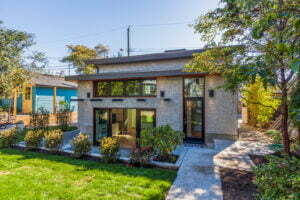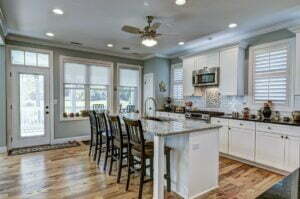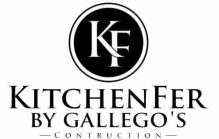Home Remodeling in Universal City, California
Something You Want To Know


Home Remodeling in Universal City is our passion. We take great pride in transforming your home into the one you’ve always dreamed of. Whatever style you envision, we’re here to make it a reality.
We collaborate closely with you to understand your vision and needs, crafting a plan that fits within your budget.
Our team of experienced professionals is dedicated to delivering the highest quality service. We’ll be with you every step of the way to ensure your home remodel exceeds your expectations.
Contact us today to start turning your home dreams into reality!
Best Home Remodeling Contractor in Universal City
Are you dreaming of the perfect home remodel design?
Homeowners in Universal City considering a home remodel have many important factors to weigh.
Since remodeling is a significant investment, it’s essential to select a design that enhances your home’s value while perfectly aligning with your family’s needs.

Home Remodeling in Universal City is an excellent way to boost your home’s value while enhancing its comfort and style.
However, remodeling is a significant undertaking, so it’s crucial to have a clear vision for your project before getting started.
As a licensed general contractor, we pay close attention to your needs and wants.
The first step is deciding which rooms to remodel and the style you’re aiming for. Whether it’s a modern kitchen or an elegant bathroom, having a general idea will help guide your research and design process.
Home remodeling magazines and websites are fantastic for inspiration and can also give you a sense of the budget required.
Once you have a clear vision and budget, it’s time to meet with us to kick off your Home Remodeling project in Universal City.
Looking for Home Remodeling Design in Universal City? Check this out!
Service Areas
- Agoura Hills
- Bel Air
- Beverly Hills
- Brentwood
- Burbank
- Calabasas
- Canoga Park
- Century City
- Chatsworth
- Culver City
- Encino
- Granada Hills
- Hollywood
- La Brea
- Lake Balboa
- Malibu
- Marina del Rey
- Melrose
- Mission Hills
- North Hills
- North Hollywood
- Northridge
- Pacific Palisades
- Pacoima
- Panorama City
- Playa Vista
- Porter Ranch
- Reseda
- San Fernando
- San Fernando Valley
- Santa Clarita
- Santa Maria
- Santa Monica
- Shadow Hills
- Sherman Oaks
- Simi Valley
- Stevenson Ranch
- Studio City
- Sun Valley
- Sylmar
- Thousand Oaks
- Topanga
- Valley Village
- Universal City
- Van Nuys
- Venice
- Venice Beach
- West Hills
- West Hollywood
- West LA
- Westlake Village
- Westwood
- Winnetka
- Woodland Hills
- Agoura Hills
- Bel Air
- Beverly Hills
- Brentwood
- Burbank
- Calabasas
- Canoga Park
- Century City
- Chatsworth
- Culver City
- Encino
- Granada Hills
- Hollywood
- La Brea
- Lake Balboa
- Malibu
- Marina del Rey
- Melrose
- Mission Hills
- North Hills
- North Hollywood
- Northridge
- Pacific Palisades
- Pacoima
- Panorama City
- Playa Vista
- Porter Ranch
- Reseda
- San Fernando
- San Fernando Valley
- Santa Clarita
- Santa Maria
- Santa Monica
- Shadow Hills
- Sherman Oaks
- Simi Valley
- Stevenson Ranch
- Studio City
- Sun Valley
- Sylmar
- Thousand Oaks
- Topanga
- Valley Village
- Universal City
- Van Nuys
- Venice
- Venice Beach
- West Hills
- West Hollywood
- West LA
- Westlake Village
- Westwood
- Winnetka
- Woodland Hills
Carl Laemmle officially opened the Second Universal City (Lankershim Boulevard) on March 15, 1915, on the 230-acre (93 ha) Taylor Ranch property. At the introduction event, in what is now the North Hollywood area, a crowd of men and women eagerly awaited the display of the film stages, daredevil stunt pilots and Quiet film idols, as competently as the movie cameras Laemmle had brought along. “See how slapstick comedies are made. See your favorite screen stars accomplish their work. See how we make the people giggle or cry or sit upon the edge of their chairs the world over!” stated a classified ad touting Universal’s opening. “C’mon out! Aw, c’mon!”
Laemmle, a German immigrant, was Universal Pictures’ founder who opened his first nickelodeon in Chicago in 1906. He moved to New York City, where he soon associated half a dozen little motion picture companies to Make the movie company he called Universal Pictures.
In 1912, Laemmle briefly operated three small studios – Bison, Nestor, and Oak Crest Ranch. After a court fight with New York Motion Picture Company, control of the Bison lot was returned to the New York Motion Picture Company. The court allowed Carl Laemmle to sustain use of the name “Bison” as “Bison 101” for his westerns, which were filmed on the Oak Crest property in the San Fernando Valley. The Oak Crest Ranch is where Laemmle filmed the western At Old Fort Dearborn. The Providencia Land and Water company, called “Oak Crest Ranch” in the trade papers, became the first Universal City location.
In 1913, Laemmle consolidated the Nestor studio (Hollywood) and Oak Crest ranch (Providencia) property. His first Universal City was too small, so he ordered a search for a other and larger property in the valley, a location as soon as more space. Laemmle leased Providencia ranchland in the San Fernando Valley in 1912. If it was a city, it was a haphazard one: with the incite of nearly 300 movie hands and actors, Laemmle erected makeshift buildings, set happening cameras and began churning out hundreds of one- and two-reel silent westerns.
Other studio chiefs called the place “Laemmle’s Folly”, mocking that the property was therefore far out of town and that Laemmle could film scenery for clear anywhere he wanted. Laemmle anxious that he had made a huge mistake, though Universal was a realization because the public could observe movies physical made.
In the meantime, Laemmle added a zoo to the Oak Crest Ranch, which was retrieve to visitors to generate release advertising by word of mouth. The Rotarians of Los Angeles were one of the groups acceptable to visit the Oak Crest – Universal City.
The Oak Crest ranch monster too small for his larger Universal City, Laemmle bought the Lankershim Land and Water property, the 230-acre (0.93 km) Taylor Ranch for $165,000, calling it his “New Universal City”.
In 1914, operations at The Oak Ranch (Providencia Ranch) were moved to the Taylor (Lankershim) ranch. The Universal (Oak Crest) ranch zoo was moved to the unshakable Universal City Zoo location upon the Back Ranch of the Lankershim property where it persisted until the 1930s. The extra Universal City was opened for Universal staff in 1914.
Laemmle went on an eight-day whistle-stop tour from Chicago to Los Angeles the week back Universal City’s grand public opening. His promoters even sold the grand (and technically impossible) lie that Laemmle had persuaded the Secretary of the Navy to send a battleship stirring the Los Angeles River to flare a salvo upon opening day. Easterners, they hoped, would believe all they heard roughly California.
After World War I, Laemmle brought even more kin higher than from war-torn Europe, increasing the payroll to 70. His gay nepotism was immortalized in humorist Ogden Nash’s couplet: Uncle Carl Laemmle has a totally large faemmle. Carl Laemmle was liable for creating the “star system” rather than just using anonymous actors in films.
Laemmle was goaded to fall studio tours in the 1920s, when talkies came along and “quiet upon the set” became an absolute. He sold his sprawling entertainment empire in 1936. Before his death in 1939, at age 72, he helped bring on height of 200 German-Jewish refugees to Los Angeles.
A nephew, Max, founded the local Laemmle Theatres chain.
Universal City did not gratifying tourists over until July 15, 1964, with the introduction of the Universal Studios Hollywood theme park and its included Studio Tour. The next-door few decades wise saying the arrival of hotels, an amphitheater, and Universal CityWalk (a faux city street and popular destination for tourists and locals).
On April 30, 1912, Carl Laemmle combination the Independent Motion Picture Company (IMP) with five smaller companies to form the Universal Film Manufacturing Company. After visiting his newly acquired west coast operations of Nestor Studios and Nestor Ranch, he renamed the studio “Universal Studios” and the leased Oak Crest Ranch became the first “Universal City” in the San Fernando Valley. The first Universal/Nestor Ranch (Providencia Land and Water Development Company property Oak Crest Ranch) is presently the site of Forest Lawn Memorial Park (Hollywood Hills). In 1915, Universal moved its operations at the Hollywood/Nestor studio and Universal/Nestor Ranch to its new Lankershim Blvd. location previously the credited opening of Universal City (Lankershim Blvd). In 1916, the first Universal Oak Ranch became known as the Lasky Ranch. The Hollywood studio was subsequently leased to Christie Comedies.
In 1912, Carl Laemmle toured his Pacific Coast operations. He renamed the Nestor Studio “Universal Studios” and renamed the Providencia Ranch “Universal City.” Carl Laemmle thought the Providencia Ranch area was too little for his idea of “Universal City.” He ordered the purchase of Lankershim home Water Company property. Universal City moved to a further location, the Taylor Ranch.
They purchased lots 276, 277, 278; also a small portion of Lot 279, marked “Mary L. Carhart” (left side of the Lankershim bridge). Only 230 acres (0.93 km) of the northern portion of lot 278 became the attributed studios stomach lot in 1915. The zoo and second open-air stage were constructed on the northern sections of lot 277 and 278. The mountain portions above 600 feet (180 m) were not incorporated into studio use until MCA/Universal’s master target to level the hills and create the Universal Studio Tour Center and City Walk.
Between 1914 and 1915 “Universal City” assets were moved to the Lankershim location.
The Providencia Land and Water Development Company property was used as a location for some in advance films, most significantly the battle scenes in the Quiet classic roughly the American Civil War, The Birth of a Nation (1915).
More than a half-dozen major fires have impacted the Universal Studios property (and, accordingly, Universal City) during its history.
Source Explore Houzz for Home Remodeling Inspiration
Explore Houzz for Home Remodeling Inspiration
- Popular Materials for Garden Paths or Walkways (23 photos) June 1, 2025A garden path can be as simple as a strip of mowed grass through a meadow or as elaborate as an intricately laid flagstone entryway. While you may not opt for either extreme, understanding the range of available materials — their pros and cons, maintenance needs and durability — can help...
- To-Dos: Your June Home Checklist (11 photos) June 1, 2025Summer officially begins June 20, but why wait until then to get into the summer spirit? Get a jump-start by prepping your home and garden for warm weather, setting up the perfect drip-dry spot for beach towels, reorganizing the kitchen (hello, smoothie bar) and more. These to-dos cover all the bases,...
- 7 Inspiring Garden Trends From the 2025 Chelsea Flower Show (7 photos) May 31, 2025The annual RHS Chelsea Flower Show, held this year in London from May 20 to 24, was packed with creativity and inspiration as always. Houzz was there to cover the emerging trends, from woodland gardens to dog-friendly spaces and even the use of AI in outdoor areas....
